Fly over NASA’s greatest ever view of Pluto
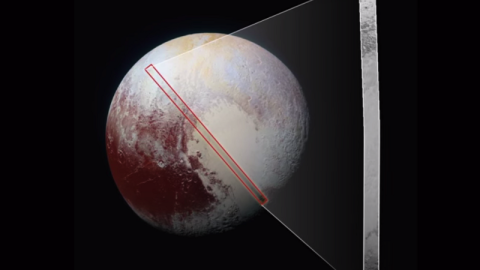
The most distant world ever imaged by fly-by reveals a richer terrain than anyone ever expected.
“The cosmic game changed forever in 1992. Before then, logic told us that there had to be other planets besides the nine (if you still count poor Pluto) in our solar system, but until that year, when two astronomers detected faint, telltale radio signals in the constellation Virgo, we had no hard evidence of their existence.” –Thomas Mallon
After nearly a decade’s-long journey, NASA’s New Horizons spacecraft flew past Pluto on July 14, 2015.
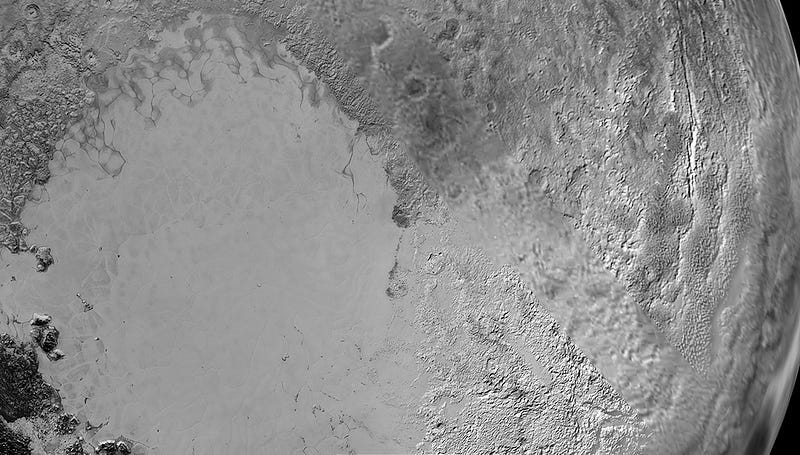
It passed within 12,500 km (7,800 miles) of the surface, making it the closest fly-by of any object past Saturn.
Although it will take a full 16 months to send the full suite of data home, the highest resolution images show an incredible diversity of terrain, including:
- cratered, pitted uplands,
- cracked, washboard-like terrain,
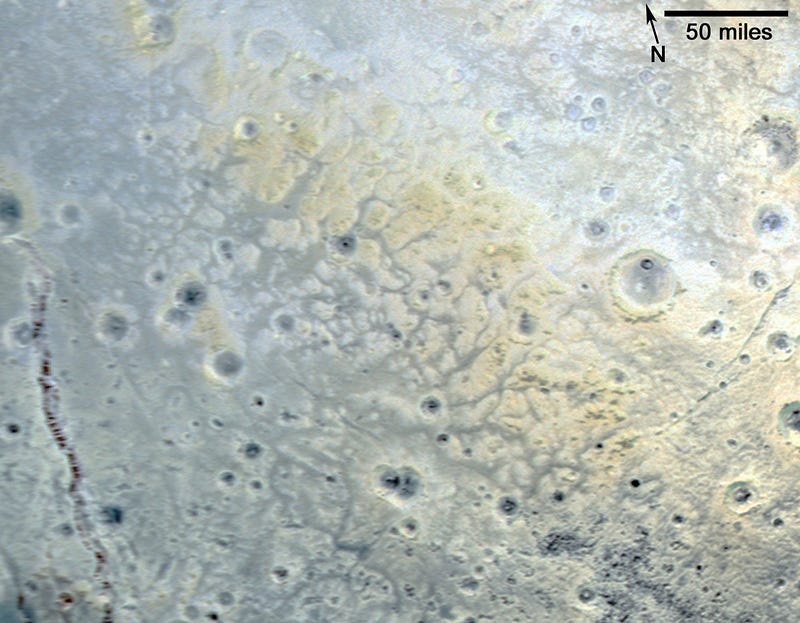
- blocky, floating ice mountains,
- “cellular” ice plains with evidence of frozen, flowing streams,
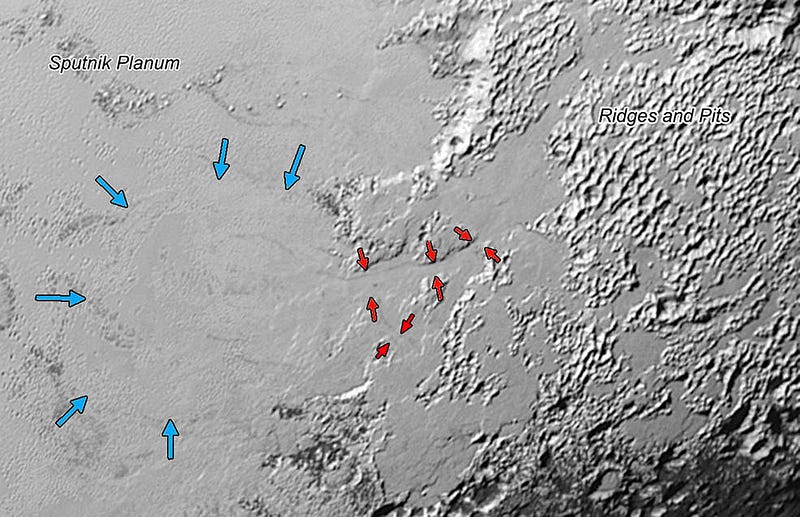
- “non-cellular” (or stream-free) plains, pock-marked with evaporating pits,
- hybrid territory, showing a mix of plains, craters, and hummocks,
- and dark-colored highlands, free of reflective snow.
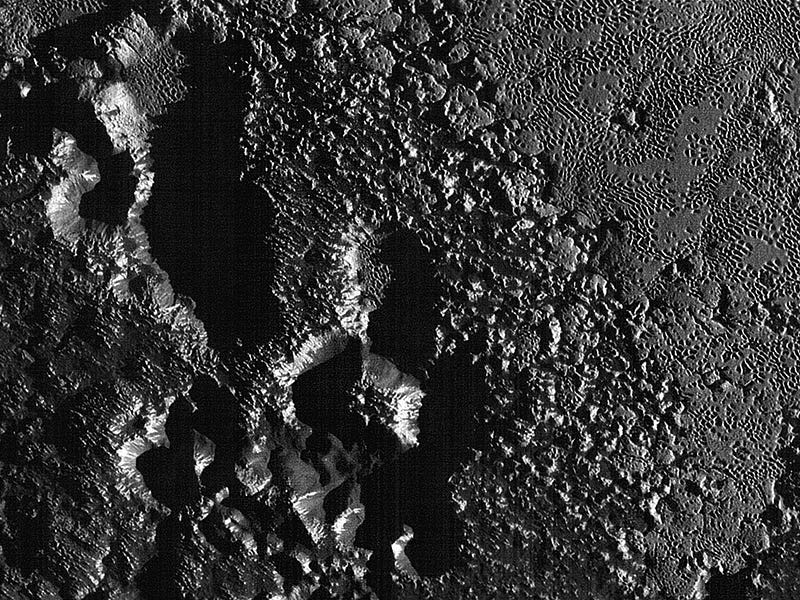
The LORRI (Long Range Reconnaissance Imager) instrument was able to obtain resolutions of just 80 meters (260 feet) per pixel, thousands of times better than what Hubble could achieve.
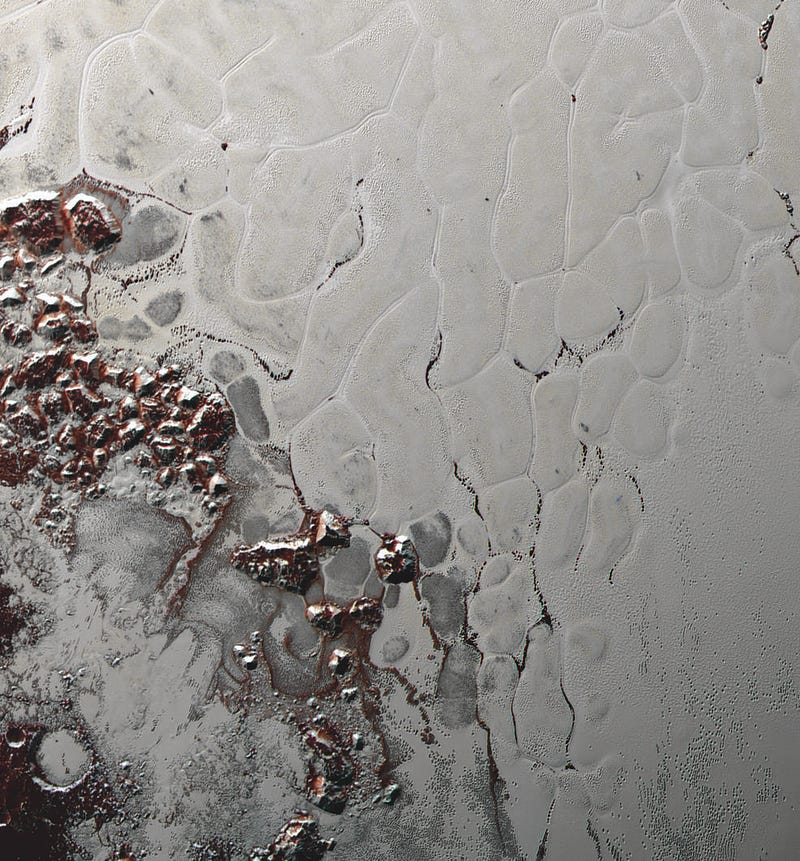
Additional instrumental analysis allowed us to determine that the “cells” on the plains turn over periodically due to geological convection, and are less than one million years old each.
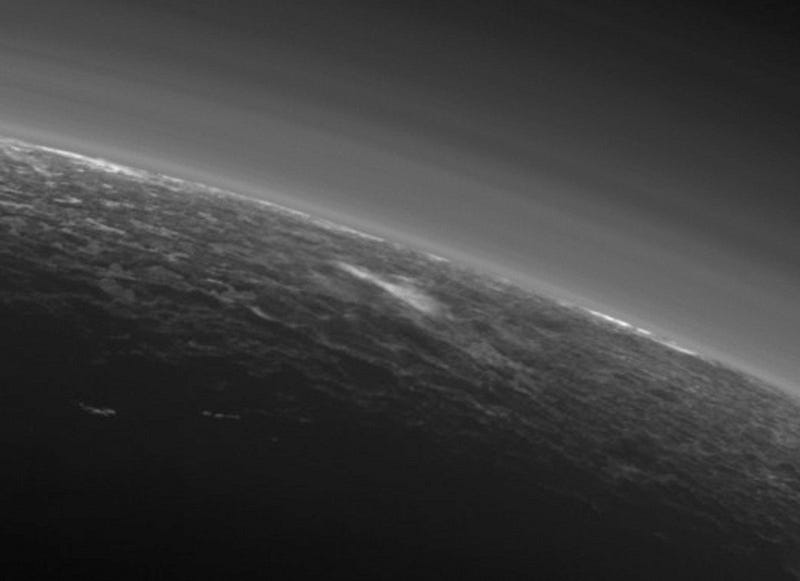
After its closest approach, New Horizons traveled through Pluto’s shadow, catching a glimpse of the backlit atmosphere, including a possible sighting of the first cloud on a Kuiper Belt Object.
Mostly Mute Monday tells the story of a single astronomical phenomenon or object primarily in visuals, with no more than 200 words of text.
This post first appeared at Forbes, and is brought to you ad-free by our Patreon supporters. Comment on our forum, & buy our first book: Beyond The Galaxy!





